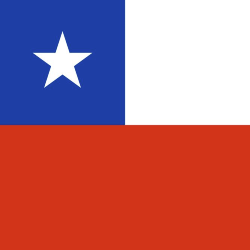What the polar night tells us about winter sleep
The 24-hour darkness during the winter near the Poles can disrupt sleep – this is how the people who live there cope.
Imagine not seeing the Sun for weeks or even months. It's dark, the air has a freezing sharp bite and everything is covered with thick snow.
But even in the midst of the polar night, it isn't pitch black. At times the rays of the Sun filter weakly through the upper layers of the atmosphere, creating twilight shades of blue, pink and purple.
There's also light from the Moon and the stars. The northern lights make a frequent appearance and the snow reflects all artificial light, creating a "snowglow" that makes everything look brighter.
It is a stunningly beautiful time of year for those living in the Arctic. For locals, the polar night is part of life, and many thrive, embracing the season. Some even say they sleep better than they do at other times of the year.
"Polar night is too short," says Esther Berelowitsch, 42, who lives in Inari, Finland, where the polar night lasts for six weeks. "I'd love if it lasted for two months. Nature shows itself even when there's no sunlight... I go to bed earlier and sleep better. I don't want spring to come."
Yet research shows that others become sad and sluggish when winter starts – deprived of the sunlight, their mood drops and depression can set in.
Sleep in the Arctic can be a unique challenge. The midnight sun during the summer months can play havoc with the human circadian rhythm, the natural clock that governs many of our bodily functions. The almost perpetual darkness of the polar night can also delay the normal sleep/wake cycle, especially in those who spend a lot of time indoors. Insomnia can be a particular problem for some people in the winter months.
But people who live and work in Arctic have also learned to cope with the challenges that the dramatic change in the seasons can mean for their sleep. There is certainly some evidence that local people are better acclimatised to the sleeping problems they might encounter during the polar night than those visiting from lower latitudes. So, what can the rest of us learn from Arctic residents about our own sleep?
In the far north of Norway, Sweden, Finland, Greenland, Russia, Canada and Alaska, the Sun remains below the horizon for much of the winter. For how long exactly depends on the location: in Rovaniemi, the capital of Finnish Lapland, right on the Arctic Circle, polar night lasts for only two days during winter solstice. In Tromsø, the largest town in northern Norway, 350km (217 miles) north of the Arctic Circle, it's about six weeks, from late November to mid-January. At the far end of the spectrum, servicemen live in darkness for almost four months a year at a Canadian military facility at Alert, in Nunavut, the world's northernmost permanently inhabited place, roughly 1,776 km (1,101 miles) north of the Arctic Circle – and just 817km (508 mi) from the North Pole.
With so little daylight, combined with the cold weather, the long winter months can affect people's mood. Perhaps the most well-known effect of the dark, cold winter months is seasonal affective disorder (Sad) – a significant slump in mood thought to be caused by a lack of sunlight during the shorter winter days. Symptoms include low energy, overeating and oversleeping, and appear in the autumn or winter, followed by spontaneous remission in the spring or summer. Disrupted sleep is also a hallmark of Sad. (Read more about how the dark days of January shape your mood, intelligence and sex drive.)
In Europe, Sad is estimated to affect some 2-8% of the population – approximately 8-14 million people, although rates vary country to country. It is also thought to afflict millions of people in the US, with rates ranging from about 1% in the south of the country to nearly 10% of the population in the north.
The same effects of latitude can be seen in countries with territory within Arctic circle. Communities living in the north of Greenland, for example, suffer far higher incidence of Sad than those in the south. Inuit communities in the Canadian Arctic also experience elevated rates compared to those further south – twice those in Ontario........






















 Toi Staff
Toi Staff Tarik Cyril Amar
Tarik Cyril Amar Jeffrey Bernstein Ph.d
Jeffrey Bernstein Ph.d Gideon Levy
Gideon Levy Maryam Aldossari
Maryam Aldossari Sabine Kinkartz
Sabine Kinkartz Jennifer Gerlach Lcsw
Jennifer Gerlach Lcsw Belen Fernandez
Belen Fernandez Maximilian Hess
Maximilian Hess Leonid Ragozin
Leonid Ragozin Rachel Marsden
Rachel Marsden
